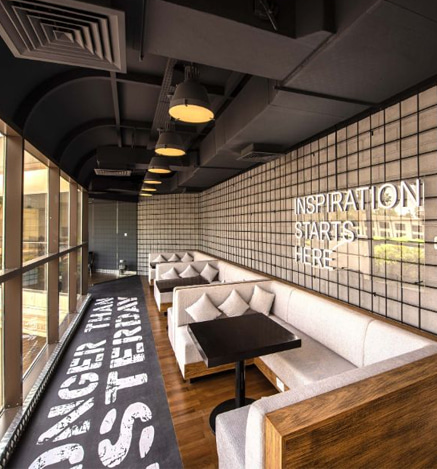The retail environment is ever evolving, and businesses are recognizing the substantial effect of a well-executed fit-out on their performance. A retail fit-out is beyond just a tangible change of a venue; it is a deliberate approach that can enhance the buying journey, reflect brand representation, and ultimately drive sales. As more retailers strive to create immersive client experiences, grasping the ins and outs of commercial renovations becomes crucial for anyone looking to establish or upgrade a shop.
In this discussion, we will investigate inspiring examples of effective commercial designs from around the world, highlighting how creative aesthetics and careful strategizing have led to impressive outcomes. From busy urban centers to delightful boutique experiences, these illustrations will offer important knowledge into the elements needed create an inviting shopping atmosphere that not only engages customers but also responds to contemporary demands and anticipated demands. Be with us as we dive into the domain of store designs and reveal the fundamental aspects that can elevate your enterprise.

Grasping Commercial Space Transformations and Their Significance
Retail fit-outs refer to the procedure of modifying a space into an attractive and functional shopping environment. This involves multiple factors such as design, layout, identity, and ambiance all designed to elevate the shopper experience. A successfully implemented fit-out can successfully convey a brand's image, making it crucial for bringing in and retaining customers. Recognizing the value of a retail fit-out goes further than looks; it includes strategic planning that can significantly influence revenue and customer visits.
The significance of a retail fit-out lies in its capability to cultivate a welcoming shopping environment that attracts customers in. A thoughtfully planned space not only exhibit products well but also encourages shoppers to interact with those products and spend more duration on-site. This increased dwell time can lead to increased sales conversions, changing casual customers into repeat customers. Moreover, the design and configuration can encourage ease of movement and an general satisfying shopping process, reinforcing positive views of the brand.
In the modern competitive retail market, a successful fit-out can differentiate a company apart. With the increase of e-commerce, physical retailers must deliver special ambiences that online shopping cannot replicate. Retail fit-outs permit businesses to include cutting-edge layouts and technologies that address the evolving demands of customers. By recognizing and putting resources into a persuasive fit-out, retailers can additionally improve their appeal but also generate lasting impact that promote sustained success.
A Commercial Fit-Out Process: Planning and Implementation
The commercial fitting procedure begins with thorough planning, that is crucial for ensuring a favorable result. The stage requires establishing the scope of work, setting a realistic budget, and setting a timeline. Working with design professionals and builders early on assists to match your concept with realistic execution. It is also important to consider the particular needs of your target audience and the overall brand image, as this will guide the design elements and layout choices.
After the preparation is finished, the execution phase kicks off. It entails coordinating multiple trades and making sure that every aspect of the fit-out is performed smoothly. Retail Fit Out Dorset and updates with your team members are necessary to address any challenges that may come up and to keep the momentum on schedule. Being detail-oriented during execution can greatly impact the end result, so it is vital to monitor the quality of workmanship and ensure that every component are set up per the planned design.
After the implementation phase, the next step is the final review and modifications. A thorough inspection will help identify any issues that require attention before launching your retail space. The step is also an opportunity to verify that all installations are operational and that the area aligns seamlessly with your initial vision. Completing this procedure effectively will not only enhance the customer experience but also establish a strong foundation for your retail operations going forward.
Innovative Movements and Green Methods in Commercial Spaces
The shopping industry is changing rapidly, with innovative developments emerging that reshape customer engagement and eco-friendliness. One notable development is the integration of advanced technology, which enhances the consumer experience through customized engagements and streamlined operations. Retailers are utilizing analytics and digital signage to design engaging atmospheres that not only draw in customers but also provide them with important information, ensuring a noteworthy visit. This approach not only boosts sales but also cultivates a deeper connection between companies and clients.
Environmental consciousness is at the center of modern retail fit-outs, as businesses gradually recognize the importance of sustainable methods. From using green resources to implementing green technologies, retailers are taking notable steps toward lowering their environmental impact. Biophilic design, which mixes natural aspects into store plans, is gaining traction as it creates engaging spaces that resonate with customers while enhancing well-being. Additionally, retailers are committing to sustainable energy and recycling initiatives, demonstrating their dedication to a sustainable future.
Moreover, cutting-edge retail fit-outs are highlighting adaptability and adaptability to meet changing consumer behaviors. The rise of digital retail has led to brands to create adaptable spaces that can swiftly adapt to meet different demands, such as organizing events or featuring new items. Pop-up stores have become a strategic approach, allowing businesses to experiment with markets in dynamic environments without long-term commitments. This tactic not only promotes creativity but also provides a platform for brands to engage with their customers in unique ways, ultimately fueling growth and client retention.
